- Administrator
- Albums and Singles
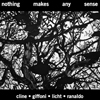 This single track, 18+ minute improvisation by a veritable super-group of six string abuse and experimentation (including members of Wilco and Sonic Youth), aided and abetted by the No Fun Fest curator and analog electronics wizard, actually has a misleading title. While these guitarists could be expected to create a squall of guitar noise like a bag of wet cats rolling down a hill, it instead shows an admirable level of free jazz type restraint and balance.
This single track, 18+ minute improvisation by a veritable super-group of six string abuse and experimentation (including members of Wilco and Sonic Youth), aided and abetted by the No Fun Fest curator and analog electronics wizard, actually has a misleading title. While these guitarists could be expected to create a squall of guitar noise like a bag of wet cats rolling down a hill, it instead shows an admirable level of free jazz type restraint and balance.
While it is balanced and restrained, it is never dull or too subtle. Instead, it has a massive sense of space in which the three guitarists are allowed to experiment and improvise; occasionally with massive amounts of effects, other times stripped down to the purest of guitar tones. Monotract member/solo artist Carlos Giffoni's electronic noise never overwhelms or dominates the space, but instead functions as yet another instrument that provides a good contrast to the generally more lower-end focused guitars.
Unlike would be the case with a similar conglomeration of pretentious 1970s rock guitarists, I for one have no way of clearly identifying the work of any specific artist over another, which makes the improvisation more of a cohesive entity instead of an exercise of whammy bar masturbation. The more quiet, reflective passages of lesser treated guitar work might be more consistent with some of Nels Cline's work with Wilco, while there is more than enough screech and feedback to show Lee Ranaldo's Sonic Youth background. And, I'm not going to lie; I'm not familiar with Alan Licht's stuff, so I won't pretend to be.
Over the duration of the long track, the sounds waivers from warm noise sheets to quieter, guitar driven passages. As aforementioned, there are never extensive harsh noise passages, but there are times in which haunted house style tones mix with carefully controlled feedback and deep, explosive pulses of electronic noise. When the noise is more prominent, it has a greater sense of tactile texture and thickness. It is plenty harsh and distorted, but in a complex, fascinating way. Giffoni even manages to work out a few solos on his electronic gear, sometimes resembling a trumpet, other times a snake charmer's flute.
Free jazz is the greatest parallel I can think of to describe this release, because these artists show that same level of restraint and working of each other's playing as would be expected from the likes of Sun Ra or Ornette Coleman's genre defining album. The liner notes, originally written for Lou Reed's Rock 'n Roll Animal are appropriate for the force presented here but sell short the subtly and complexity of sound that is also present.
samples:
Read More
- Administrator
- Albums and Singles
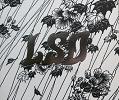 Recorded live in the studio over two nights, this is a double CD of jams by the ever wonderful Bardo Pond and Japan's equally loveable LSD March. The music tilts from sounding like outtakes from Bardo Pond's Selections CD-Rs to LSD March's heady live sound. All the descriptions and superlatives that have been attributed to either band apply just as well to this monster of an album that they have spawned.
Recorded live in the studio over two nights, this is a double CD of jams by the ever wonderful Bardo Pond and Japan's equally loveable LSD March. The music tilts from sounding like outtakes from Bardo Pond's Selections CD-Rs to LSD March's heady live sound. All the descriptions and superlatives that have been attributed to either band apply just as well to this monster of an album that they have spawned.
The opening track of the first disc, "We are LSD Pond," fades in like the jamming has been going on for some time before we have been allowed to listen in. Based around a solid groove, the piece is like one long solo where everyone solos. It sounds self- indulgent (and sitting in a studio jamming all day is a fine way to indulge yourself) but it is fantastic nonetheless. There is only one way to describe the music and that is that it is white hot.
Amazingly, from such a high octane start the jams get wilder and better as the album progresses. Most of the pieces work so well thanks to the fantastic drumming on every track. Despite there being three people credited with drums and percussion, it never sounds over the top. On "Utuwa No Naka No Mizu," a Kraut inspired drum pattern allows for the rest of the band to go hog wild with some very exciting guitar with wah pedal solos going on.
On the second disc, the line up has been augmented slightly as it is from a second day of recording. The songs with this line up are substantially longer and unlike the instrumental first act, Isobel Sollenberger contributes vocals to the mix. It begins with a radically different "We are LSD Pond." Sollenberger's voice gets masked by the music, it sounds like she has a PA set up at monumental volumes in another building and it is bleeding through the walls over the maelstrom of LSD Pond's freakout. It works well with this and the subsequent tracks but it would have been nice to have some cleaner vocals too.
I cannot finish this review without mentioning the gorgeous presentation of this album. Archive always have attractive packaging for their releases and this is no exception. Designed by Keith Utech, this release has a textured outer sleeve with a design like old fashioned wallpaper contains a small booklet of photos from the sessions and the CDs (encased in simple black sleeves bound with more of the wallpaper-style card). The physical package matches the sounds heard on the disc perfectly.
Overall this is a phenomenal album, both bands have come together to form a glorious whole and a glorious din. This is a stand out album no matter which band's back catalogue you consider. It is one of the first new releases of 2008 and I would be very surprised if I was not still spinning it in December.
samples:
Read More
- Scott Mckeating
- Albums and Singles
Alex Neilson's extensive liners make it difficult to say anything that doesn't sound like paraphrasing of his perfectly on-point thoughts. Hladowski has a strong vocal that is ferociously fragile: a voice sometimes lost in character; broken but determined to finish her narrative. The accapella "In the Month of January" is no less musical for its simplicity. Instrumentally, it is an understated set of performances from The Family Elan's Chris Hladowski and Isobel Campbell. T
he contribution of the thin smooth flesh of Campbell's cello bleeds all the emotion of the worst moments of warmth over a pair of tracks. The steady tempo and beauty of Chris Hladowski's bouzouki on "Willy O'Winsbury" moves like the leisurely springs on a honeymooner's bed. It is his backing on "Andrew Lambie" that provides Stephanie's weary vocal bones a place to rest, his warm electric/organic hum filling the song. The final moments of this vinyl are the most startling with the end of the record leaving the sensation that something has been stolen from the room (life, air, words, resolution, perhaps a presence?). Even by returning to those last few seconds countless times, it is still unclear what it was.
Read More
- Duncan Edwards
- Albums and Singles
The A side of this 7" has an alluring and fractured sensibility. The hypnotic effect is like sitting in a car in the desert, turning the radio dial, and stumbling upon ancient transmissions returning from deep space. Valentine's elusive lyrics ensure that the exact reason why he has chosen to consider the great writer, along with baseball pitcher Nolan Ryan, remains a puzzle. Perhaps it hints at an encounter similar to Dick's VALIS. I only wish the latest scandal to "rock" baseball could be the discovery that Ryan is an android.
The flipside, "We Can't Build You," is a longer piece with a title negating that of a P. K. Dick short story. It is even less decipherable, with a similarly sparse atmosphere, slightly more effusive guitar effects and an occasional bend into a warped doo-wop or rural blues sensibility. The only problem with this strange addition to the ever-expanding body of work inspired by PKD is that it is not a whole album.
Read More
- Administrator
- Albums and Singles
 Accessible, improvisational jazz is given new life at the hands of this exceptional quartet. Australian pianist Marc Hannaford leads his group through a variety of musical approaches, drawing a lively dialogue out of each of them that entertains with ease. This quartet reaches deep into their imaginative bag of tricks and pull out one stunning performance after another.
Accessible, improvisational jazz is given new life at the hands of this exceptional quartet. Australian pianist Marc Hannaford leads his group through a variety of musical approaches, drawing a lively dialogue out of each of them that entertains with ease. This quartet reaches deep into their imaginative bag of tricks and pull out one stunning performance after another.
Extreme
In some ways it seems all too easy to release an album of improvised music. With the advent of cheap recording it is possible for almost anyone to assemble a bunch of half-assed recordings produced over the course of a few extended jams and call it an album. Woe to the thoughtless noise-maker indeed, for his kind is populating the internet with increasing regularity. I expected so much from Marc Hannaford. I must admit a certain amount of cynicism when it comes to modern jazz recordings; all too often they favor technique over content and, as is the case with other genres that claim improvisation as a cornerstone of their craft, fail to provide much to appreciate beyond the technique itself. Hannaford, Scott Tinkler, Ken Edie, and Philip Rex know a thing or two about improvisation, however. They exhibit a thoughtfulness in their play that the likes of Albert Ayler and John Coltrane recognized as invaluable to the art form. With an eye on certain compositional principles and methodologies, each member of this quartet contributes their own character and reason to eight superb recordings of controlled chaos.
"Sauna Twins" begins with Hannaford's incongruous and drunken piano playing; he stumbles and careens across his ivory keys in seemingly random jumps, ranting with a persistent vigor that pretends coherence. Philip Rex soon answers his call on bass, entering open spaces in the conversation with light jabs and punchy deliveries. It's not hard to imagine that the two musicians are in conversation with each other, one calling out in a certain chord, the other responding with a quick urgency. The addition of Edie's drums and Tinkler's trumpet suddenly clouds this exchange, but soon each musician falls in with the other, filling in the gaps that one or the other leaves. In no time at all (and without introduction), the massive "G.E.B." is in full swing. The instruments have, in the span of just over four minutes, become characters of their own. Sometimes they compliment each other by falling into near silence together, other times they appear to argue, one yelling in order to claim dominance, the other three huddling together before launching a counter-attack. The beauty of many of these performances is that they feel genuinely organic, like the best written dialogues. For all the random components at play, however, there is a unifying theme at work in the background, a theme that each of the musicians manage to keep in mind as they parade through their own musical arguments.
Clocking in at over 17 minutes long, one might expect "G.E.B" to become boring or overwrought, but each of its varied movements not only seem necessary, they're downright beautiful. Tinkler's trumpet performance, especially in the last five minutes or so, is nearly epic in all its 64th-note glory. Rex's percussive force is immense, his hands creating a virtual parade of power throughout the entire piece. It might be argued that "G.E.B." lays too many cards on the table too early; both "Pure Evil" and "All Booze" seem small in its shadow, but both are appealing and set the rest of the record up quite well. The initial and deceptive calm of "I'll Go Down..." (Hannaford's solo piano performance) is all the more powerful because of the way it contrasts with "All Booze" and "Pure Evil" features some pseudo-funky bass and drum explosions that'd make Squarepusher more than just a little jealous. There is a lot going on throughout The Garden of Forking Paths. It is equally diverse, random, tight, well-conceived, and welcoming. I'm as impressed with the music as I am with the technique that spawned it.
samples:
Read More
- Administrator
- Albums and Singles
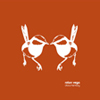 Rolan Vega's ambiguous debut on Community Library suffers from its unfocused genesis. In part a tribute to movie and television soundtracks, Documentary is an intriguing compilation of Vega's synthesizer compositions but not an entirely successful album.
Rolan Vega's ambiguous debut on Community Library suffers from its unfocused genesis. In part a tribute to movie and television soundtracks, Documentary is an intriguing compilation of Vega's synthesizer compositions but not an entirely successful album.
Community Library
Released last year, Documentary wobbles between being an academic salutation and a directionless compilation of synthetic melody and rhythm. The music itself was composed at different times for different media and purposes; these songs were used variously as live scores, soundtracks for short films, and accompaniments to Vega's own video projects. The result is an uneven collection of songs. No matter how intriguing many of these compositions are, listening through from beginning to end can become a chore. While an emphasis on completion may have demanded the inclusion of many short and unique tracks, their inclusion on Documentary represents the majority of the album's disposable fare. Video may have originally given depth to these tracks, but standing alone they inspire little more than an anxious desire to move to the next song.
Fortunately Vega is an adept composer capable of producing uneasy moments, triumphant crescendos, fecund sound-scapes, danceable rhythms, and unique aural episodes. Given time and patience, Documentary blooms and showcases some undeniable gems.
Both "Viva Myria" and "Playlite" contain an enchanting depth and complexity. The former relies upon synthetic drift to weave its spell while the latter hums to the stuttering of a suffocated percussion section. Neither offers more than a minimal number of musical sources, but both call very strong images to mind with little effort. If it were not for the two intervening shorts, "4 Autiim" would have complimented them both nicely. For five minutes it pulses with electronic waves of sound and metallic snares, engendering a fleet of sci-fi memories as played by whirring robotic musicians. My three favorite pieces on this album call to mind sci-fi movies, actually, all of them dense and distorted with an undeniable element of foreboding included.
The disc closes with "Documentary," a piece sure to call some other soundtrack-obsessed musicians to mind. With the sound of chirping birds in tow, Vega ends his album with a warmth characteristic of the soundtracks composed for nature documentaries and PBS specials. It does not come as an unexpected surprise nor is it wholly un-listenable, but its simply a disappointment. Vega is at his best when he's cutting his own path, not emulating someone else's. Documentary provides enough to enjoy, but lacks both continuity and consistent quality.
samples:
Read More
- Administrator
- Albums and Singles
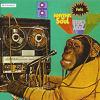 Rare records are funny things; to some people the value of the record is in how many were pressed and the quirks of individual pressings. To others it is the music that counts, to hell with catalogue numbers and whether it has misprinted labels. This is a release to appeal to those in the former category, rare as hen's teeth but nothing to write home about.
Rare records are funny things; to some people the value of the record is in how many were pressed and the quirks of individual pressings. To others it is the music that counts, to hell with catalogue numbers and whether it has misprinted labels. This is a release to appeal to those in the former category, rare as hen's teeth but nothing to write home about.
A lot of this album sounds like jams without much direction; the music does not have enough energy to warrant a jam for jam's sake. Moments of excitement do occur like the savage bass line of "Burcak Tarlalari" or the organ solo in "Zeytinyagi" (which is strangely faded out just as it gets going). However, much of the music just blends into one amorphous blob. There is no identity to the music, no fire in the performance and considering the 35 years since its first release, there is nothing here that does not sound completely dated.
This is surprising considering that according to the album's sleeve notes Ozkent was a whiz kid when it came to modifying and inventing instruments. Yet despite the talk of guitars with extra frets and his apparent mastery of electronics, Genclik Ile Elele comes across as a soulless version of Can's Ege Bamyasi as covered by the resident band of a tacky Istanbul drinking establishment. It fades into the background just as much as a holiday resort band does, it does not command attention in any meaningful way.
I can understand why B-Music would like to reissue this considering that the breaks are pretty cool but I would rather hear the end results of this being sampled for use in other works. Even then, I am not sure how important a good break beat is any more considering the vast majority of sampled music (read: pop) is incredibly boring and astoundingly lazy. What was cutting edge in the early days of the turntable is a hackneyed standard now but I digress.
Genclik Ile Elele is of curiosity value for those who do not have big enough wallets to buy an original copy or for those afraid of devaluing an investment. Yes it is a rare record but rarity does not equal quality.
samples:
Read More
- Administrator
- Albums and Singles
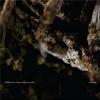 This is the second release from Eamon Sprod's field recordings project and a wonderful collection of sound collages. In spite of a fairly hackneyed premise (the beauty in decay), he has created a number of fragile compositions that wander somewhere between Chris Watson's clear recording style and Francisco Lopez's disorientating approach to presenting sound.
This is the second release from Eamon Sprod's field recordings project and a wonderful collection of sound collages. In spite of a fairly hackneyed premise (the beauty in decay), he has created a number of fragile compositions that wander somewhere between Chris Watson's clear recording style and Francisco Lopez's disorientating approach to presenting sound.
One thing that must be said about Wind Keeps Even Dust Away is that it requires full attention to appreciate. Many of the sounds are very quiet and variations in volume throughout the album mean it is definitely not something to listen to on a portable media player or in the car. With the right listening environment, the detail on offer is mesmerising. The key word here is texture (which is obvious from the macro photography of the album's sleeve) as Sprod explores everything from the fine grain of a strong wind on "Keeps" to the unidentifiable hiss of "Dust" (it sounds like rain but the promotional material insist that any water sounds are a trick of the ear). This is music I want to touch.
Sprod plays with dynamics in a similar fashion to the aforementioned Lopez. On the opening piece there is a constant drone cut short by the shattering of glass. The glass is not significantly louder than the ambience that precedes it but the sounds are different enough for the transition to be jarring. The silence that ensues is quiet indeed. The volume ebbs and flows on all of the pieces in surprising and captivating ways, it is like the soundscapes are there to habituate the listener to a sound before shocking them out of their comfort zone.
The album closes with the superb "Away." Here, Sprod goes wild with all his techniques and saves his most interesting recordings for this piece. It is 13 minutes of disturbing moods and seriously unsettling sounds ranging from a thunderstorm of metallic clangs to something that sounds like a man made from glass cracking his knuckles. This piece is worth the cost of the CD alone.
I have always had a soft spot for field recordings and found sounds but finding artists that can either record sound in a way that captures the essence of the location or can use raw recordings in a creative manner is difficult to say the least. When dealing with sound works like this, it is the little details that make or break an album. Luckily Sprod has a good ear for details and brings the most out of them when assembling his compositions. The care and detail that have gone into Wind Keeps Even Dust Away make it a very satisfying listen.
samples:
Read More
- Administrator
- Albums and Singles
 Some nine years ago I remember hearing much about this German industrial/power electronics band, mostly about their ultra limited LPs that fetched exorbitant amounts on the then-nascent eBay, so they instantly had cult appeal. Dear reader, remember: this was before the days of widespread file sharing, commonplace CDRs, etc,... So I was unable to actually hear what all the fuss was about until a friend recorded me (to MiniDisc, no less), a copy of the double live LP Remember, which I instantly remember loving. Fast forward a few years and their entire discography is online, and I remember feeling let down once I heard these original albums. They're not bad by any means, but they didn't quite live up to the hype that had been generated. Now, ten years after its original release, Remember is reissued on CD, with 18 minutes of extra material recorded between 1997 and 2000.
Some nine years ago I remember hearing much about this German industrial/power electronics band, mostly about their ultra limited LPs that fetched exorbitant amounts on the then-nascent eBay, so they instantly had cult appeal. Dear reader, remember: this was before the days of widespread file sharing, commonplace CDRs, etc,... So I was unable to actually hear what all the fuss was about until a friend recorded me (to MiniDisc, no less), a copy of the double live LP Remember, which I instantly remember loving. Fast forward a few years and their entire discography is online, and I remember feeling let down once I heard these original albums. They're not bad by any means, but they didn't quite live up to the hype that had been generated. Now, ten years after its original release, Remember is reissued on CD, with 18 minutes of extra material recorded between 1997 and 2000.
Before putting in the first disc, I wasn't sure how I would feel. My initial exposure to this material was as a fresh faced computer science undergrad that used to listen to my MD copy frequently on the way to class, always proud of my overly obscure and esoteric taste in music. Now I'm a bitter, cynical doctoral student who can't be arsed with such things and actually owns that recent Feist album. However, once the opening sample of a militia training camp of "Dogday" began, all was once again good with the world. For those not as familiar, Remember is a variety of live material culled from various shows played by the band between 1989 and 2000, taking into account the additional material that was not on the original double LP set. The newer material is appended to the second disc and fits right in, mostly consisting of non-studio material as well as selections from 1999's The Truth Will Make You Free LP. As aforementioned, I felt that in some ways Genocide Organ were a victim of their own hype, from ultra limited out of print releases and the like. Once they were more easily accessible (the self-titled disc that was issued on their first Japanese tour and the In-Konflikt album are both still available for purchase most places), it was pretty apparent they were not the most amazing industrial band ever, but did have a distinct skill at creating atmospheric tracks that could be either violently noisy or subduded, sinister atmospherics.
Any review of the band would be remiss to at least not recognize the controversial elements of their imagry, which has been consistently pegged as fascist, racist, and so forth. Most signs seem to point to a penchant for irony and showing the ugly side of humanity, and that is the side I would lean towards as well. Regardless of the subject matter, the band's equivalent of "Freebird," "White Power Forces" (here abbreviated as WPF…are we going politically correct, guys?) remains one of the most powerful, punishing noise/industrial hybrids of music since SPK's "Slogun" some 25+ years ago. Even the infamous Klan Kountry single appears here in a live form that seems much more varied and complex than the studio recordings. The band as at their best when they allow in rhythms in my personal opinion: the simple thump of "1…2…Tod" mixed with the atmospheric electronics and looped Apocalypse Now sample remains compelling in its simplicity, and I'm sure some geek could find a way to dance to the fractured drum machine on "John Birch Society."
Genocide Organ need not focus so heavily on the controversial to be compelling though. One of my all time favorite tracks of theirs, "Slap In Your Face" is all subtle, restrained clicking and industrial pulsing over a reading of Moby Dick of all things. The tension that builds to the looped climax is brilliant. The balance between subtly and harshness is apparent on "Harmony," which, even in its sub-bass pulse and yelled vocals, still feels somewhat restrained and controlled, like rage seething beneath the skin.
While referring to Remember as a double live album reeks of 1970s prog rock pretense, it functions much better as almost a career overview, but with the selected tracks almost entirely being stronger, more forceful incarnations than the studio takes. The addition of the more recent material serves to strengthen the disc as a whole and do not feel out of place among the tracks I heard so many years ago. I would definitely rank this among the best classic industrial/noise/power electronics recordings ever, and now it can be had without having to sell blood to buy an overpriced copy of the original vinyl on eBay.
samples:
Read More
- Administrator
- Albums and Singles
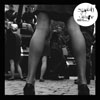 Compared to the other releases in the ARC series, Junzo's work stands out as being one that is very different in style and approach. Rather than seeming overly experimental or esoteric, it instead goes for an acid tinged psychedelic approach to folk and blues that still manages to convey its own sound. It isn't as dark as some of the previous discs in the series, so it would seem that ARC releases are ending on a slightly brighter note. However, there is a great deal of emotion and passion felt in the minimal guitar strums and chords.
Compared to the other releases in the ARC series, Junzo's work stands out as being one that is very different in style and approach. Rather than seeming overly experimental or esoteric, it instead goes for an acid tinged psychedelic approach to folk and blues that still manages to convey its own sound. It isn't as dark as some of the previous discs in the series, so it would seem that ARC releases are ending on a slightly brighter note. However, there is a great deal of emotion and passion felt in the minimal guitar strums and chords.
This album as a whole is simple guitar playing—no heavily duty processing, no NASA like battery of effects, no band, no vocals—just Junzo and his Gibson. For that reason alone there is a certain consistent feel to the tracks that some may find repetitive, but I personally think it adds to the intimacy. I feel as if I'm in the room as he's playing these songs to me. The opening and ending tracks, "Shadows-Lights" and "Lights-Shadows" are appropriately cut from the same cloth: somewhat folky pieces that feel very loose and occasionally get almost percussive in nature, but always remain melodic.
There is a constant feeling of shifting and changing emotions from track to track. "Lost Chords" has a decidedly sad, melancholic sound to it throughout its gentle, sad strums. However, the mood quickly uplifts for the next track, "Ameria," which is much more upbeat with a rapid, free jazz tempo to it that could quickly lift both mood and spirits. Even the blues get a nod on "Circles for Vibrolux," which take the loping, staccato riff style associated with the early blues artists and recontextualizes it into a psychedelic electric sound.
The biggest change is in the sprawling "Hats Off to A.M." which, clocking in at over 16 minutes, is by far the longest track on here. This is the only time that there is actually the feel that this is a studio recording, because the track does have some inkling of effects or processing. Never to an extent that it no longer feels like a guitar recording, but there is some obvious effects used to create the long, violin like drones of guitar tone that permeate the mix. As a whole it is a very subtle, engaging piece that feels warm and inviting, but never manages to sink fully into the background with its subtlety.
Pieces for Hidden Circles is an odd beast amongst a world that is usually more focused in darkness and the morose. It is instead an album that feels very warm, spiritual and inviting. With only his guitar, Junzo creates an intimate setting that draws the listener in, and even though it remains relatively Spartan throughout, it is never anything but captivating.
samples:
Read More
- Administrator
- Albums and Singles
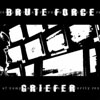 Noise and power electronics is always so often heavily entrenched in fascist imagery, serial killer worship, sexual depravity, etc. Not that there's anything wrong with any of that, it just gets trite after a while. Griefer instead opts to create a thematic work based around the Internet and hacking, and the imagery seeps in from the packaging and track titles into the overall sound, giving it a very cohesive feel. Although it doesn't break any new ground genre-wise, it does offer a fresh take on the established that fans will enjoy.
Noise and power electronics is always so often heavily entrenched in fascist imagery, serial killer worship, sexual depravity, etc. Not that there's anything wrong with any of that, it just gets trite after a while. Griefer instead opts to create a thematic work based around the Internet and hacking, and the imagery seeps in from the packaging and track titles into the overall sound, giving it a very cohesive feel. Although it doesn't break any new ground genre-wise, it does offer a fresh take on the established that fans will enjoy.
One of the instantly recognizable things upon listening to this disc is that Griefer has a very strong sense of structure and composition. Rather than turning up everything to 11 and letting the electronics roar, each individual track comes across as calculated, planned, and allowed to develop. The opener "Pentagon Takes Network Offline" establishes the disc well, a slow piece of atmospheric industrial, a din of modem tones and CPU cycles that is met with deep, pounding monotone percussion and shrieked, unidentifiable vocals. "Fucking Douchebag" takes a similar approach, a slow building track of repetitive loops and junk percussion that swells, but never veers out of control
Other tracks aren't afraid to let their inner maniac out, and "Mpack vs. Storm" and "Malicious Iframe" both manage to stay in the harsher territory, the latter's low bass rumbles and random odd sounds mixed with shrieked manic vocals calls to mind the best elements of early (pre-Great White Death) Whitehouse. The track that stands out as the most odd amongst the disc would have to be "Facebook," with its wobbly 1960s sci-fi synth line and percussive blasts.
The vocals on the disc remain consistently indecipherable throughout, so they come across more as another instrument instead of anything else, so that works wthin the context. I, for one, would at least like some idea of what is being screamed and ranted about, but with the level of indecipherability, I can just assume it is cute fluffy bunnies if I so choose. Which I doubt. But the sound really works, even if the vocal effects sometimes seem to be too similar from track to track, the remainder of the mix ensures it doesn't become overly repetitive or too similar.
Brute Force isn't revolutionizing noise or power electronics but their take on it is fresh enough to make it a definite worthwhile listen. It is not hard to see their influences shaping their sound, but the approach is excellent. I, for one, welcome a powerful disc of noise without serial killers or 1940s German political figures included!
samples:
Read More

